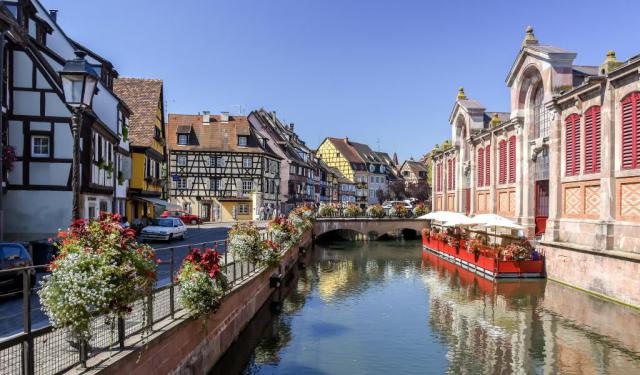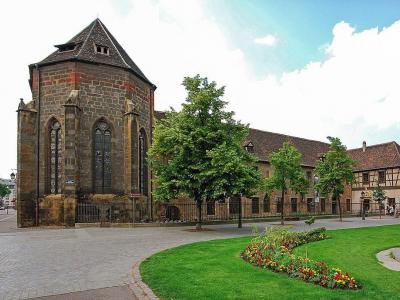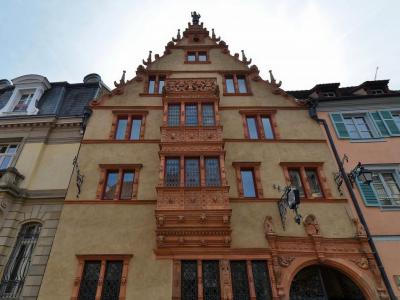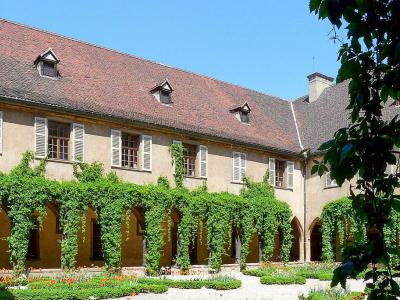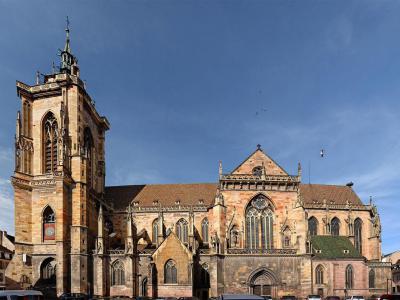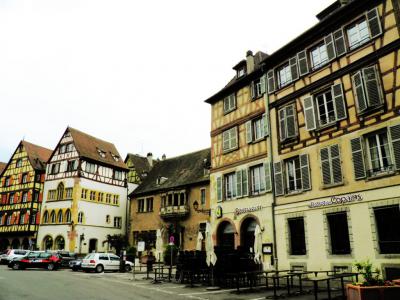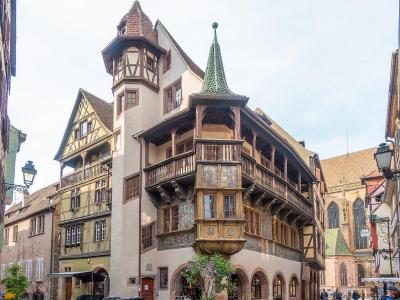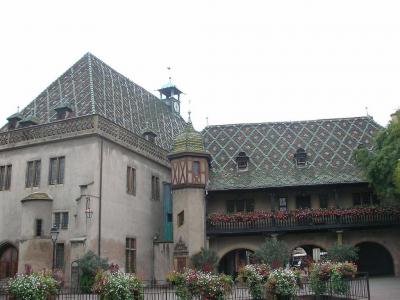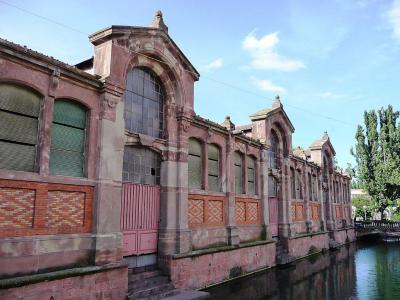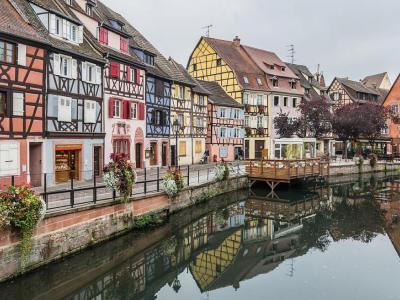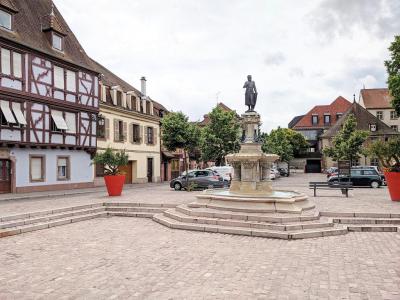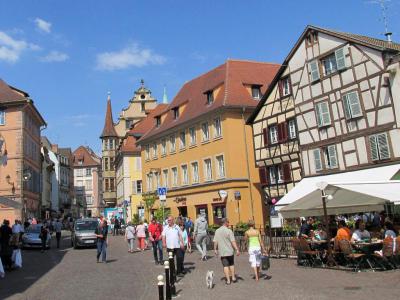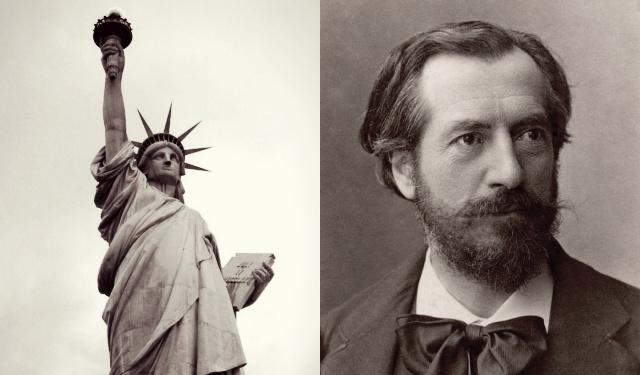Audio Guide: Colmar Introduction Walking Tour (Self Guided), Colmar
Colmar, in France’s Alsace region, has packed more political plot twists into its history than some countries manage in a millennium. Holy Roman Emperor Charlemagne knew the place well during his Saxon campaigns between 772 and 804, and by 884, imperial assemblies were held here like it was the place to be. Leap to 1226-Emperor Frederick II grants Colmar the status of a Free Imperial City, free to run its own affairs under the Holy Roman Empire’s gaze. Independence, however, proved more of a rental than a purchase: in 1632, Swedish forces marched in during the Thirty Years’ War, only for Louis XIV’s France to plant its flag in 1673-at least until the next shift in the script.
Life in Alsace meant living on Europe’s geopolitical seesaw. After the Franco-Prussian War in 1871, Colmar was annexed by the German Empire, returned to France, switched back again-more than once-through the chaos of the 20th century. By 1945, the back-and-forth finally stopped, and France kept the keys. Admirably, Colmar managed to dodge the worst of the French Revolution, the Franco-Prussian War, and both world wars, leaving its medieval lanes and Renaissance facades almost unnervingly intact.
The name “Colmar” comes from the medieval German Columbarium, or “dovecote.” Why? Possibly because of a tower that housed pigeons, though no one’s entirely sure. By the 9th century, the place was on the books, growing into a market town that thrived on its position along major trade and wine routes. Wine, textiles, and skilled craftsmanship lined the coffers, carrying prosperity through the Middle Ages and Renaissance.
Today, Colmar keeps its past close at hand. The River Lauch loops through the old town, giving rise to the so-called Little Venice district. The historic Fishmongers’ Wharf harks back to its days as a buzzing market hub, while the Unterlinden Museum curates a sweep of art history from medieval devotion to modern experimentation.
Hemmed in by vineyards and the Vosges Mountains, Colmar wears its history like it’s in no rush to change outfits. Walk the lanes, cross the canals, and you’re drifting through a timeline that never bothered to end-just kept adding chapters.
Life in Alsace meant living on Europe’s geopolitical seesaw. After the Franco-Prussian War in 1871, Colmar was annexed by the German Empire, returned to France, switched back again-more than once-through the chaos of the 20th century. By 1945, the back-and-forth finally stopped, and France kept the keys. Admirably, Colmar managed to dodge the worst of the French Revolution, the Franco-Prussian War, and both world wars, leaving its medieval lanes and Renaissance facades almost unnervingly intact.
The name “Colmar” comes from the medieval German Columbarium, or “dovecote.” Why? Possibly because of a tower that housed pigeons, though no one’s entirely sure. By the 9th century, the place was on the books, growing into a market town that thrived on its position along major trade and wine routes. Wine, textiles, and skilled craftsmanship lined the coffers, carrying prosperity through the Middle Ages and Renaissance.
Today, Colmar keeps its past close at hand. The River Lauch loops through the old town, giving rise to the so-called Little Venice district. The historic Fishmongers’ Wharf harks back to its days as a buzzing market hub, while the Unterlinden Museum curates a sweep of art history from medieval devotion to modern experimentation.
Hemmed in by vineyards and the Vosges Mountains, Colmar wears its history like it’s in no rush to change outfits. Walk the lanes, cross the canals, and you’re drifting through a timeline that never bothered to end-just kept adding chapters.
How it works: Download the app "GPSmyCity: Walks in 1K+ Cities" from Apple App Store or Google Play Store to your mobile phone or tablet. The app turns your mobile device into a personal tour guide and its built-in GPS navigation functions guide you from one tour stop to next. The app works offline, so no data plan is needed when traveling abroad.
Colmar Introduction Walking Tour Map
Guide Name: Colmar Introduction Walking Tour
Guide Location: France » Colmar (See other walking tours in Colmar)
Guide Type: Self-guided Walking Tour (Sightseeing)
# of Attractions: 11
Tour Duration: 1 Hour(s)
Travel Distance: 1.5 Km or 0.9 Miles
Author: DanaOffice
Sight(s) Featured in This Guide:
Guide Location: France » Colmar (See other walking tours in Colmar)
Guide Type: Self-guided Walking Tour (Sightseeing)
# of Attractions: 11
Tour Duration: 1 Hour(s)
Travel Distance: 1.5 Km or 0.9 Miles
Author: DanaOffice
Sight(s) Featured in This Guide:
- Musee Unterlinden (Unterlinden Museum)
- Maison des Tetes (House of Heads)
- Couvent des Dominicains de Colmar (Dominican Church)
- Eglise Saint-Martin (St. Martin Church)
- Place de la Cathédrale (Cathedral Square)
- Maison Pfister (Pfister House)
- Ancienne Douane (Old Custom House)
- Marche Couvert (Covered Market)
- Little Venice and Fishmongers’ Wharf
- Place des Six Montagnes Noires (Square of the Six Black Mountains)
- Grand Rue (High Street)
1) Musee Unterlinden (Unterlinden Museum) (must see)
Matthias Grünewald didn’t leave behind a vast portfolio-just ten paintings and thirty-five drawings survived him. The rest vanished in the 17th century, taken as war booty by the Swedish army and lost at sea. His great survivor, the Isenheim Altarpiece of 1516, avoided that fate and now resides in Colmar’s Unterlinden Museum, the kind of “forever home” most masterpieces can only dream about.
The museum opened in 1849 inside a 13th-century Dominican convent, a building that had been abandoned after the French Revolution and rescued two years earlier. Across the street, a public bath from 1906 eventually became part of the complex, and by 2015 the two buildings were joined, creating 86,000 square feet of exhibition space-proof that history can expand without losing its roots.
The early collection leaned heavily on Roman mosaics unearthed in nearby Bergheim and sculptures loaned from the Louvre. Then, in 1852, Grünewald’s Altarpiece arrived, setting the tone for a museum that would grow into one of Alsace’s cultural heavyweights. By 1853, the doors opened to the public, the old convent halls now echoing with centuries of art instead of monastic prayers.
Today, the Unterlinden houses a deep trove of Rhenish medieval and Renaissance works. Martin Schongauer is here in strength, with altarpieces, engravings, and woodcuts. Nearby hang pieces by Albrecht Dürer, Lucas Cranach and Hans Holbein. Anonymous German, Alsatian, and Swiss masters fill in the gaps, including the enigmatic Master of the Stauffenberg Altarpiece.
Not everything is painting and parchment-sections dedicated to archaeology, Baroque sculpture, stained glass, historic weapons, musical instruments, and even toys widen the view. And with future expansions on the horizon, the Unterlinden seems set on proving that a museum with one foot in the Middle Ages can still keep moving forward.
The museum opened in 1849 inside a 13th-century Dominican convent, a building that had been abandoned after the French Revolution and rescued two years earlier. Across the street, a public bath from 1906 eventually became part of the complex, and by 2015 the two buildings were joined, creating 86,000 square feet of exhibition space-proof that history can expand without losing its roots.
The early collection leaned heavily on Roman mosaics unearthed in nearby Bergheim and sculptures loaned from the Louvre. Then, in 1852, Grünewald’s Altarpiece arrived, setting the tone for a museum that would grow into one of Alsace’s cultural heavyweights. By 1853, the doors opened to the public, the old convent halls now echoing with centuries of art instead of monastic prayers.
Today, the Unterlinden houses a deep trove of Rhenish medieval and Renaissance works. Martin Schongauer is here in strength, with altarpieces, engravings, and woodcuts. Nearby hang pieces by Albrecht Dürer, Lucas Cranach and Hans Holbein. Anonymous German, Alsatian, and Swiss masters fill in the gaps, including the enigmatic Master of the Stauffenberg Altarpiece.
Not everything is painting and parchment-sections dedicated to archaeology, Baroque sculpture, stained glass, historic weapons, musical instruments, and even toys widen the view. And with future expansions on the horizon, the Unterlinden seems set on proving that a museum with one foot in the Middle Ages can still keep moving forward.
2) Maison des Tetes (House of Heads)
If Colmar’s half-timbered streets are its stage, the House of Heads is the show-stealer that’s been holding the spotlight for over four centuries. Built in 1609 by Anton Burger-a wealthy merchant who eventually upgraded to the mayor’s chair-it rose on the footprint of his father’s home, only with considerably more flair. Architect Albert Schmidt gave it the full German Renaissance treatment: two sturdy main floors, a soaring gable with three extra tiers, and a central bay window so grand it demands a second look. And then, of course, there are the 106 carved heads and grotesques staring down at you from every angle-some human, some mythical, all rendered in stone with top-notch precision.
In 1902, Auguste Bartholdi, the same man who gifted the world the Statue of Liberty, decided the gable needed a new headliner. So up went an Alsatian cooper in silvery metal, hoisting a wine bottle in one hand and a foaming beer mug in the other-a lively toast to Colmar’s wine trade and the Wine Exchange that once called this place home. Burger himself never saw it; he left for Basel in 1698 and died there later that year. The property passed to new owners, cycled through various uses, and even moonlighted as the Colmar Chamber of Commerce before finding its current calling.
These days, the House of Heads wears its history well. The façade still stops passersby in their tracks, while inside, the Renaissance bones meet the comforts of a five-star hotel and a Michelin-starred restaurant. It’s the kind of place where you can admire 17th-century stonework over dinner, sleep under centuries-old beams, and leave with the feeling you didn’t just visit Colmar-you lodged in one of its best stories.
In 1902, Auguste Bartholdi, the same man who gifted the world the Statue of Liberty, decided the gable needed a new headliner. So up went an Alsatian cooper in silvery metal, hoisting a wine bottle in one hand and a foaming beer mug in the other-a lively toast to Colmar’s wine trade and the Wine Exchange that once called this place home. Burger himself never saw it; he left for Basel in 1698 and died there later that year. The property passed to new owners, cycled through various uses, and even moonlighted as the Colmar Chamber of Commerce before finding its current calling.
These days, the House of Heads wears its history well. The façade still stops passersby in their tracks, while inside, the Renaissance bones meet the comforts of a five-star hotel and a Michelin-starred restaurant. It’s the kind of place where you can admire 17th-century stonework over dinner, sleep under centuries-old beams, and leave with the feeling you didn’t just visit Colmar-you lodged in one of its best stories.
3) Couvent des Dominicains de Colmar (Dominican Church)
If you’re wandering through Colmar’s old town, you might spot a large Gothic structure with a calm cloister hiding just off the street-that’s the Dominican Church. It sits between two squares with names as weighty as its history: Dominican Square and Martyrs of the Resistance Square. The Dominican friars, also known as the Order of Preachers, arrived here in 1260 and broke ground on the church in 1289.
Inside, the choir stretches over five vaulted bays, ending in an apse shaped like half a stop sign. The nave, finished in 1346, is held up by columns so slender they look almost fragile, but they’ve held steady for centuries. The stained glass, glowing with early 14th-century color, tells scenes from the Life of Christ. Step into the cloister and you’ll find arcades arranged in an almost-rectangle-emphasis on “almost.”
The showpiece inside is Martin Schongauer’s “Virgin of the Rose Bush,” a Renaissance altarpiece painted in 1473. The cloister walls carry their own treasures: murals from the late 15th century depicting the Passion of Christ. And if you think this has always been a quiet place of worship, think again-over the centuries, the church double-dutied as a military storehouse during the Revolution, a corn exchange in 1807, and only returned to religious use in 1898.
The convent buildings themselves have been just as restless. Built around 1300, rebuilt in the 1700s, they served as military police barracks, then a teachers’ training school. Since 1951, they’ve housed the municipal library, giving the friars’ former quarters a quieter kind of learning.
Both the church and cloister have been officially recognized as historical monuments since 1948-an honor that means this place will keep its story for generations to come.
Inside, the choir stretches over five vaulted bays, ending in an apse shaped like half a stop sign. The nave, finished in 1346, is held up by columns so slender they look almost fragile, but they’ve held steady for centuries. The stained glass, glowing with early 14th-century color, tells scenes from the Life of Christ. Step into the cloister and you’ll find arcades arranged in an almost-rectangle-emphasis on “almost.”
The showpiece inside is Martin Schongauer’s “Virgin of the Rose Bush,” a Renaissance altarpiece painted in 1473. The cloister walls carry their own treasures: murals from the late 15th century depicting the Passion of Christ. And if you think this has always been a quiet place of worship, think again-over the centuries, the church double-dutied as a military storehouse during the Revolution, a corn exchange in 1807, and only returned to religious use in 1898.
The convent buildings themselves have been just as restless. Built around 1300, rebuilt in the 1700s, they served as military police barracks, then a teachers’ training school. Since 1951, they’ve housed the municipal library, giving the friars’ former quarters a quieter kind of learning.
Both the church and cloister have been officially recognized as historical monuments since 1948-an honor that means this place will keep its story for generations to come.
4) Eglise Saint-Martin (St. Martin Church) (must see)
Imagine it’s 1972, and archaeologists in Colmar are digging around Saint Martin Church when-surprise-they strike architectural gold. Beneath the current structure, they unearth not one, but two earlier churches. The oldest, built around the year 1000, was a Carolingian creation. The second, a Romanesque design, came a little later. The church standing today began taking shape in 1234 and wasn’t wrapped up until 1365-a construction timeline that makes modern building delays look positively speedy.
Saint Martin’s isn’t shy about its dimensions: 256 feet from end to end, 66 feet high inside, and a transept that spreads 112 feet across. Its steeple rises to 233 feet-topped not with a dainty spire but a hefty 16th-century “helmet” roof, added after a fire in 1572. Walk around, and you’ll notice the mix of entrances-some grandly framed with detailed tympanums, others small and long since bricked up. Colored roof tiles crown the structure, and the facade’s thick polygonal columns keep things grounded, while the tall apse windows aim for the heavens.
Inside, the space breathes. There’s a Baroque organ case from 1755, a proper regional style ambulatory, and chapels holding Medieval altars and statues. The stained glass is a history lesson in color, with a rare 13th-century depiction of Christ without a beard. In 1482, painter Caspar Isenmann was hired to tell the Life of Jesus in panels-seven of which survive in the Unterlinden Museum.
And while locals call it “the cathedral,” it officially held that title for just a brief stint-from 1790 to 1801-before returning to its status as a collegiate church dedicated to Saint Martin of Tours. Short-lived cathedral or not, it’s been the city’s spiritual heavyweight for centuries, and Colmar wouldn’t be quite the same without it.
Saint Martin’s isn’t shy about its dimensions: 256 feet from end to end, 66 feet high inside, and a transept that spreads 112 feet across. Its steeple rises to 233 feet-topped not with a dainty spire but a hefty 16th-century “helmet” roof, added after a fire in 1572. Walk around, and you’ll notice the mix of entrances-some grandly framed with detailed tympanums, others small and long since bricked up. Colored roof tiles crown the structure, and the facade’s thick polygonal columns keep things grounded, while the tall apse windows aim for the heavens.
Inside, the space breathes. There’s a Baroque organ case from 1755, a proper regional style ambulatory, and chapels holding Medieval altars and statues. The stained glass is a history lesson in color, with a rare 13th-century depiction of Christ without a beard. In 1482, painter Caspar Isenmann was hired to tell the Life of Jesus in panels-seven of which survive in the Unterlinden Museum.
And while locals call it “the cathedral,” it officially held that title for just a brief stint-from 1790 to 1801-before returning to its status as a collegiate church dedicated to Saint Martin of Tours. Short-lived cathedral or not, it’s been the city’s spiritual heavyweight for centuries, and Colmar wouldn’t be quite the same without it.
5) Place de la Cathédrale (Cathedral Square)
Cathedral Square only picked up its grand name in 1934. Before that, this 13th-century space went by the more modest “New Square”, even though it sat atop the old Mount of Olives cemetery. Back in 1553, part of the burial ground was cleared to make way for a lively marketplace squeezed between Saint-Martin Church and the Ossuary-a bone storage solution that’s every bit as macabre as it sounds.
Just off the square is the Waldner-Stephan Court, where a venerable Judas tree has been holding its ground since 1791. Legend insists Judas himself ended things on a tree of this kind, and the springtime purple blossoms are said to mark Christ’s tears. Today, the old tree stands behind iron railings, with a plaque making sure no one forgets its long life.
One architectural showpiece here is the Guard House. Originally a chapel dedicated to Saint James in 1286, it got a Renaissance upgrade in 1577, complete with a veranda and ornate portal. Over the centuries, it’s doubled as a town hall, a police station, a nut market, and even a platform for magistrates. Now that is some reliable architecture.
The addresses here read like a mix of history and everyday life. At No. 6, the RUC bookstore tempts browsers with more than 45,000 titles spread over five floors, all linked by a grand central staircase. No. 16 is the Adolph House, a survivor from around 1350 with pointed Gothic windows and a neighbourly old well from 1592 standing next door.
For those thinking less about architecture and more about appetite, No. 11 is home to Yann’s Workshop, a patisserie large enough to make any diet nervous. And right at the foot of the church, l’Amandine offers both a brewery and a brasserie-ideal for ending your square-side wander with something in a glass and something on a plate.
Just off the square is the Waldner-Stephan Court, where a venerable Judas tree has been holding its ground since 1791. Legend insists Judas himself ended things on a tree of this kind, and the springtime purple blossoms are said to mark Christ’s tears. Today, the old tree stands behind iron railings, with a plaque making sure no one forgets its long life.
One architectural showpiece here is the Guard House. Originally a chapel dedicated to Saint James in 1286, it got a Renaissance upgrade in 1577, complete with a veranda and ornate portal. Over the centuries, it’s doubled as a town hall, a police station, a nut market, and even a platform for magistrates. Now that is some reliable architecture.
The addresses here read like a mix of history and everyday life. At No. 6, the RUC bookstore tempts browsers with more than 45,000 titles spread over five floors, all linked by a grand central staircase. No. 16 is the Adolph House, a survivor from around 1350 with pointed Gothic windows and a neighbourly old well from 1592 standing next door.
For those thinking less about architecture and more about appetite, No. 11 is home to Yann’s Workshop, a patisserie large enough to make any diet nervous. And right at the foot of the church, l’Amandine offers both a brewery and a brasserie-ideal for ending your square-side wander with something in a glass and something on a plate.
6) Maison Pfister (Pfister House) (must see)
If you’re strolling down Merchants' Street and spot a building that looks like it’s been dressed for both a medieval festival and a Renaissance parade, you’ve found Maison Pfister. Built in 1537 for Ludwig Scherer-a wealthy hatter whose side hustle in Vosges silver clearly paid off-it replaced a place with the far grittier names “Red Rooster” or “Black Hands.” The Pfister name didn’t arrive until the 19th century, when François Pfister and his family moved in, and it’s stuck ever since. By 1892, the Judlin family took ownership and in 1909 gave it the architectural equivalent of a spa retreat.
This house knows how to work a street corner. Its base is solid yellow sandstone, while the upper floor flaunts timber framing. A two-storey oriel window elbows out over the street, crowned by a wooden loggia balcony. Above it all, an octagonal turret with a bulbous top punctuates the skyline. At ground level, arched arcades invite you in, while mullioned, triple-crossed windows and steep rooflines keep your eyes busy. Curved Gothic stonework props it up, and a tidy wood balustrade caps the oriel like a flourish.
The real conversation starter, though, is the façade. Christian Vacksterffer’s fading but still intricate murals parade a lineup of 16th-century Germanic emperors, the coats of arms of Colmar and Upper Alsace, the four Evangelists, the Western Church Fathers, and even a few Genesis scenes. Think of it as sixteenth-century curb appeal: part art gallery, part power statement.
Since its historic monument status in 1927-and a fresh touch-up in 2012-Maison Pfister has remained one of Colmar’s star attractions. Set among the hum of modern shops, it still radiates the swagger of its Renaissance heyday, proving that good craftsmanship and a lot of history never go out of style.
This house knows how to work a street corner. Its base is solid yellow sandstone, while the upper floor flaunts timber framing. A two-storey oriel window elbows out over the street, crowned by a wooden loggia balcony. Above it all, an octagonal turret with a bulbous top punctuates the skyline. At ground level, arched arcades invite you in, while mullioned, triple-crossed windows and steep rooflines keep your eyes busy. Curved Gothic stonework props it up, and a tidy wood balustrade caps the oriel like a flourish.
The real conversation starter, though, is the façade. Christian Vacksterffer’s fading but still intricate murals parade a lineup of 16th-century Germanic emperors, the coats of arms of Colmar and Upper Alsace, the four Evangelists, the Western Church Fathers, and even a few Genesis scenes. Think of it as sixteenth-century curb appeal: part art gallery, part power statement.
Since its historic monument status in 1927-and a fresh touch-up in 2012-Maison Pfister has remained one of Colmar’s star attractions. Set among the hum of modern shops, it still radiates the swagger of its Renaissance heyday, proving that good craftsmanship and a lot of history never go out of style.
7) Ancienne Douane (Old Custom House) (must see)
At the crossroads of Colmar’s medieval lifelines-High Street and Merchants' Street-stands the Koifhus, or Old Custom House, a building that’s been wearing multiple hats for over five centuries. First envisioned in 1433 but not wrapped up until 1480, it didn’t stay still for long. Sixteenth-century annexes bulked it up, but by the 1800s, those additions were sagging, and the wrecking crew was on standby. Instead, a late-19th-century facelift saved it, complete with a turret and gleaming glazed tiles, and in 2002 its sandstone balustrade got a fresh polish.
Originally, the Koifhus was all business-quite literally. It doubled as a warehouse and tax checkpoint for goods coming in and out of town, and in 1534, the Federation of the Ten Imperial Cities of Alsace convened here. Then the French Revolution blew through, sweeping away its commercial privileges. By 1840, the serious business of customs had been replaced by the lighter business of theatre. Eight years later, it hosted the first office of the discount bank. Through the decades, it’s served as the Chamber of Commerce and even a boys’ school, before settling into its modern role as an event venue.
It also has a claim to fame on the personal side of history: Jean Rapp, the Napoleonic general known for his bravery and sense of honor, was born here while his father worked as the building’s janitor. A plaque on the Koifhus marks the connection, and if you head to Field of Mars Park, you’ll find Bartholdi’s statue of Rapp standing at attention.
Today, the Koifhus is more than a picturesque backdrop-it’s a layered piece of Colmar’s story, where politics, commerce, and community life have all passed under its timber and tile. The building has kept itself relevant for over 500 years, which is no small feat in a city that knows a thing or two about aging gracefully.
Originally, the Koifhus was all business-quite literally. It doubled as a warehouse and tax checkpoint for goods coming in and out of town, and in 1534, the Federation of the Ten Imperial Cities of Alsace convened here. Then the French Revolution blew through, sweeping away its commercial privileges. By 1840, the serious business of customs had been replaced by the lighter business of theatre. Eight years later, it hosted the first office of the discount bank. Through the decades, it’s served as the Chamber of Commerce and even a boys’ school, before settling into its modern role as an event venue.
It also has a claim to fame on the personal side of history: Jean Rapp, the Napoleonic general known for his bravery and sense of honor, was born here while his father worked as the building’s janitor. A plaque on the Koifhus marks the connection, and if you head to Field of Mars Park, you’ll find Bartholdi’s statue of Rapp standing at attention.
Today, the Koifhus is more than a picturesque backdrop-it’s a layered piece of Colmar’s story, where politics, commerce, and community life have all passed under its timber and tile. The building has kept itself relevant for over 500 years, which is no small feat in a city that knows a thing or two about aging gracefully.
8) Marche Couvert (Covered Market) (must see)
Set in Colmar’s frame-worthy “Little Venice” and the historic Fishmongers’ District-once home to the city’s professional fishermen and boatmen-the Covered Market is as much a feast for the senses as it is for the stomach. Here, under one roof, you’ll find cheeses and quiches rubbing elbows with fresh fish, charcuterie, Moroccan tagines, Vietnamese pho, strong coffee, delicate cakes, and wines to match.
There’s even a riverside patio where your lunch can come with a side of water views.
This 19th-century marketplace was designed by architect Louis-Michel Boltz and stands right on the banks of the Lauch River, its waters curling around the building like a protective moat. In its early days, market gardeners would arrive by flat-bottomed boats, steering straight to the river portals to unload their produce-no traffic jams, just the occasional splash. Architecturally, the market blends brick and cut stone with a sturdy metal framework, all supported by cast-iron columns. On the southwest side, Auguste Bartholdi’s 1869 statue The Little Wine Grower keeps a quiet watch over the bustle.
Step inside and the atmosphere is anything but quiet. The arc of stalls offers a running tour of tastes: buttery pastries at L’Enfariné, pungent rounds at the Saint-Nicolas Cheese Factory, foie gras from Schmidt Farm, plant-based dishes at Cooked Raw, and bright, herby snacks from Lemon and Basil. Whether you’re picking up a picnic, sitting down for a proper lunch, or just grazing as you wander, the Covered Market is a reminder that in Colmar, history and appetite get along very well.
There’s even a riverside patio where your lunch can come with a side of water views.
This 19th-century marketplace was designed by architect Louis-Michel Boltz and stands right on the banks of the Lauch River, its waters curling around the building like a protective moat. In its early days, market gardeners would arrive by flat-bottomed boats, steering straight to the river portals to unload their produce-no traffic jams, just the occasional splash. Architecturally, the market blends brick and cut stone with a sturdy metal framework, all supported by cast-iron columns. On the southwest side, Auguste Bartholdi’s 1869 statue The Little Wine Grower keeps a quiet watch over the bustle.
Step inside and the atmosphere is anything but quiet. The arc of stalls offers a running tour of tastes: buttery pastries at L’Enfariné, pungent rounds at the Saint-Nicolas Cheese Factory, foie gras from Schmidt Farm, plant-based dishes at Cooked Raw, and bright, herby snacks from Lemon and Basil. Whether you’re picking up a picnic, sitting down for a proper lunch, or just grazing as you wander, the Covered Market is a reminder that in Colmar, history and appetite get along very well.
9) Little Venice and Fishmongers’ Wharf (must see)
Colmar might be the capital of Alsace wine country, but in its “Little Venice” district, the real vintage is the view. Threaded along the Lauch River canal, the cobbled lanes are flanked by a parade of multi-coloured half-timbered houses that look like they’ve been dipped in pastel paints. And despite the nickname, the place is more “Little Bruges” or “Little Amsterdam”-if either of those cities had just the one river to fuss over.
The Lauch itself begins its 45-kilometre run in the Vosges Mountains before drifting into town, where the most charming way to meet it is from a flat-bottomed boat. You buy your ticket at a riverside pub, hop aboard, and let a boatman steer you under bridges and past centuries-old facades while tossing in local tales as if they were part of the cargo.
On foot, a solid starting point is Old Custom Square, watched over by Auguste Bartholdi’s statue of General Lazare de Schwendie. He’s clad in full 16th-century armour and strikes a pose that could earn him a role in Don Quixote. From there, amble down the Street of the Tanners, cross its namesake bridge, and you’ll spill onto the Quay of the Fishshop, once the pride of Colmar’s fishing guild and still home to the bustling Covered Market.
The route then carries you to Krutenau, the old haunt of market gardeners, before drawing you over the Abreuvoir Bridge and along Herse Street to the heart of Little Venice. From Saint-Pierre Bridge, the district’s rooftops, shutters, and canals stack up into one of Colmar’s best photo frames. Keep going along Saint-Pierre Boulevard, take a right on Manege Street, and you’ll find yourself in the Square of the Six Black Mountains-a fittingly dramatic full stop to a walk that feels like stepping through a living postcard.
The Lauch itself begins its 45-kilometre run in the Vosges Mountains before drifting into town, where the most charming way to meet it is from a flat-bottomed boat. You buy your ticket at a riverside pub, hop aboard, and let a boatman steer you under bridges and past centuries-old facades while tossing in local tales as if they were part of the cargo.
On foot, a solid starting point is Old Custom Square, watched over by Auguste Bartholdi’s statue of General Lazare de Schwendie. He’s clad in full 16th-century armour and strikes a pose that could earn him a role in Don Quixote. From there, amble down the Street of the Tanners, cross its namesake bridge, and you’ll spill onto the Quay of the Fishshop, once the pride of Colmar’s fishing guild and still home to the bustling Covered Market.
The route then carries you to Krutenau, the old haunt of market gardeners, before drawing you over the Abreuvoir Bridge and along Herse Street to the heart of Little Venice. From Saint-Pierre Bridge, the district’s rooftops, shutters, and canals stack up into one of Colmar’s best photo frames. Keep going along Saint-Pierre Boulevard, take a right on Manege Street, and you’ll find yourself in the Square of the Six Black Mountains-a fittingly dramatic full stop to a walk that feels like stepping through a living postcard.
10) Place des Six Montagnes Noires (Square of the Six Black Mountains)
Today, the Square of the Six Black Mountains is a lively public space, but in the 14th century it was the address of one of Colmar’s most exclusive hostelries. Its guestbook read like a chapter of European history-princes of Württemberg, the Duke of Wellington, Field Marshal Gustav Horn, Marshal General Turenne, and even Cardinal Mazarin all passed through its doors. That chapter closed abruptly in 1880, when fire reduced the once-grand inn to ashes.
Rather than leave the lot bare, the city commissioned the Roesselmann Fountain. At its centre stands a bronze Judge Jean Roesselmann, who died in 1262 defending Colmar’s independence from the bishop of Strasbourg. Sculptor Auguste Bartholdi gave him an extra layer of symbolism by modelling his face on Hercule de Payerimhoff, the mayor ousted by German forces in 1871. Four bronze fish weirs ring the base, their shapes echoing Gothic fountain design.
These days, history takes a back seat to holiday magic here. The square transforms into one of Colmar’s five Christmas markets, devoted entirely to children. Think miniature houses, a carousel, and Santa’s oversized mailbox-where letters to the North Pole bypass the usual postage and go straight into the realm of make-believe.
Rather than leave the lot bare, the city commissioned the Roesselmann Fountain. At its centre stands a bronze Judge Jean Roesselmann, who died in 1262 defending Colmar’s independence from the bishop of Strasbourg. Sculptor Auguste Bartholdi gave him an extra layer of symbolism by modelling his face on Hercule de Payerimhoff, the mayor ousted by German forces in 1871. Four bronze fish weirs ring the base, their shapes echoing Gothic fountain design.
These days, history takes a back seat to holiday magic here. The square transforms into one of Colmar’s five Christmas markets, devoted entirely to children. Think miniature houses, a carousel, and Santa’s oversized mailbox-where letters to the North Pole bypass the usual postage and go straight into the realm of make-believe.
11) Grand Rue (High Street)
Colmar’s High Street-isn’t long, but it’s been pulling its weight for centuries. This 1,600-foot stretch has been the city’s main commercial spine since the Middle Ages, funneling goods, gossip, and grandeur between the Old Custom House and Merchants' Street. Back then, merchants, guild masters, and itinerant traders crammed its length, doing deals on the ground floors of the same half-timbered buildings where they slept upstairs. The façades are still here-Gothic, Renaissance, and Baroque-like a century-spanning architectural lineup that refuses to be replaced.
A stroll takes you past the Customs House, the Church of Saint Matthew, Sandherr House, Kern House, and the House of the Saint John’s Knights. You’ll also spot the Roesselmann Fountain and the Flower Market Square, each with a backstory worth lingering over. Stray a few steps from the main drag, and you’ll bump into the Collegiate Church of Saint Martin or drift toward the “Little Venice” district, where canals, courtyards, and café terraces tempt you off-course.
In its current form, High Street blends history with a little retail theatre. Brightly painted beams and intricate carvings set the scene for boutiques selling local wine, pungent cheeses, and the kind of handcrafted souvenirs that might actually survive the trip home. Come December, the Colmar Christmas Markets crank up the atmosphere-lights, garlands, and timber chalets turn the street into a festive set piece. But the real magic is that, even with the holiday trimmings gone, High Street still feels like an unbroken link to Colmar’s past, a place where you can quite literally walk through the city’s commercial history without ever leaving the present.
A stroll takes you past the Customs House, the Church of Saint Matthew, Sandherr House, Kern House, and the House of the Saint John’s Knights. You’ll also spot the Roesselmann Fountain and the Flower Market Square, each with a backstory worth lingering over. Stray a few steps from the main drag, and you’ll bump into the Collegiate Church of Saint Martin or drift toward the “Little Venice” district, where canals, courtyards, and café terraces tempt you off-course.
In its current form, High Street blends history with a little retail theatre. Brightly painted beams and intricate carvings set the scene for boutiques selling local wine, pungent cheeses, and the kind of handcrafted souvenirs that might actually survive the trip home. Come December, the Colmar Christmas Markets crank up the atmosphere-lights, garlands, and timber chalets turn the street into a festive set piece. But the real magic is that, even with the holiday trimmings gone, High Street still feels like an unbroken link to Colmar’s past, a place where you can quite literally walk through the city’s commercial history without ever leaving the present.
Walking Tours in Colmar, France
Create Your Own Walk in Colmar
Creating your own self-guided walk in Colmar is easy and fun. Choose the city attractions that you want to see and a walk route map will be created just for you. You can even set your hotel as the start point of the walk.
Bartholdi's Statues in Colmar
Auguste Bartholdi is one of the most famous artists from Colmar. His works, such as the Lion of Belfort in Belfort, France, and the Statue of Liberty in New York Harbor, are known around the world. Colmar is decorated with open-air pieces sculpted by the artist.
Many of Bartholdi's statues are found in fountains that occupy spaces in city squares or on significant street corners. Some of... view more
Tour Duration: 3 Hour(s)
Travel Distance: 5.9 Km or 3.7 Miles
Many of Bartholdi's statues are found in fountains that occupy spaces in city squares or on significant street corners. Some of... view more
Tour Duration: 3 Hour(s)
Travel Distance: 5.9 Km or 3.7 Miles
The Most Popular Cities
/ view all
